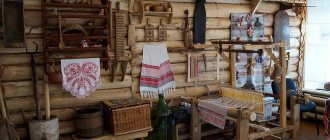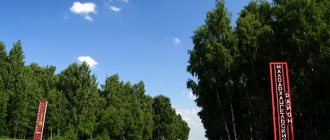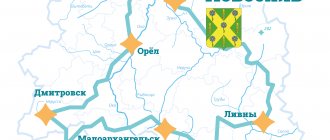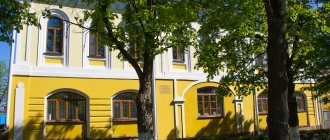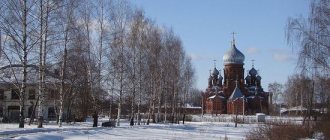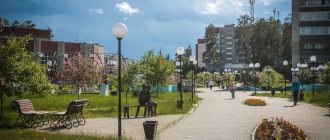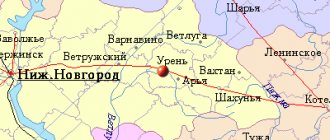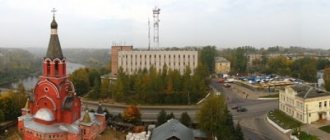Black boxes with fairy-tale scenes are widely known outside of Russia - products from the village of Palekh, located in the Ivanovo region. It is Palekh boxes (caskets, brooches), along with Zhostovo trays and Khokhloma, that go abroad as souvenirs in the luggage of foreign tourists. However, in the village of Palekh there is something to see besides the production of boxes: there are 19 objects that you can visit, including: the Museum of Icons, the House-Museum of I.I. Golikov, Museum of Palekh Art, Holy Cross Church, completely painted by Palekh masters.
Palekh
Palekh is one of the centers of Russian folk crafts, located 350 km from Moscow and 60 km from Ivanovo. The population of Palekh is only 4,800 people (as of 2022). A visit to Palekh can be combined with sightseeing in the Ivanovo region, the city of Ivanovo, Ples, Kineshma.
Palekh is the “main competitor” of Fedoskino near Moscow, since they also paint papier-mâché boxes here. During my next vacation, I managed to visit the village of Palekh on an excursion, which I will tell readers of the site about.
At the beginning of the excursion, we were disembarked from the bus next to a poster showing that in Palekh there are at least 19 objects worthy of tourist attention: But in our program, unfortunately, there was only time for a cursory examination of four of them.
Museum of Icons in Palekh
Our acquaintance with Palekh began with the Museum of Icons. It was a real discovery for me that before the revolution Palekh was one of the centers of icon painting and had nothing to do with the manufacture of boxes. Local icon painters have developed their own original and recognizable style with their own professional secrets.
The museum collection is rich and includes not only Palekh icons, but also those brought over many years from other ancient cities of Russia. There are even wooden sculptures from Old Believer churches.
Palekh Icon Museum
Palekh Icon Museum
Unfortunately, I configured the settings incorrectly and most of the pictures turned out poorly. After all, as it turned out, the most important thing in a Palekh icon is the color scheme.
Palekh Icon Museum
Palekh Icon Museum
Attractions in the surrounding area
Shartomsky Ostrich
Address: Shuisky district, Vvedenye village Coordinates: 56.957867, 41.322221 Phone: Website: https://ivstraus.ru Opening hours: Sat-Sun 12:00-14:00 Cost: 150 rubles. How to get there:
- by bus: from the Ivanovo bus station, flight “Ivanovo - Vvedenye”;
- by car: along the Ivanovo - Shuya road in the direction of the village of Dunilovo, along the way there will be a sign on the left side.
Ostrich farm with 15 ostriches and friendly owners.
The name is associated with the 14th century Nikolo-Shartomsky monastery located in the village.
The farm tour will take about an hour. Photography is permitted on the farm.
You can get a lot of information about ostriches, feed them by hand, buy soap made from ostrich fat, or buy an ostrich egg.
Churches in the village of Vvedenye
Nikolo-Shartomsky Monastery
Coordinates: 56°57′58″ N 41°20′18″ E Address: Shuisky district, Vvedenye village
The monastery is one of the oldest in the country. Founded in the XIII-XIV centuries. According to one version, it was founded by monks who fled from Suzdal from the Tatar invasion; according to another, the monastery was built on the site where, on the banks of the Shartoma River (the ancient name of the Shakhma River), the image of Nicholas the Wonderworker appeared to a young peasant woman.
Until the 16th century, the monastery was rich and influential. Then it gradually lost its meaning. In the 20s of the last century, the monastery was closed and turned into a collective farm warehouse.
Since 1990, the monastery belongs to the church. Now it is actively recovering.
In addition to the monastery, there are two more temple complexes in the village.
The first complex is located in the center of the village near the Shuya road. It was built on the site of the Vvedensky Convent, which was abolished in 1764. First, in 1807, the cold Church of the Presentation was built, money for which was collected by the whole world, in 1845 - the warm Vladimir Church. Both church buildings were typical for wealthy villages of Shuya district.
Another complex is located in the former village of Pupki at the beginning of Severnaya Street. The Churches of the Ascension of the Lord and St. John the Evangelist were built on the site of the wooden church of St. Paraskeva. The state of the temples is abandoned.
Other temples and churches in the village of Vvedenye:
The current Church of the Presentation of the Blessed Virgin Mary into the Temple
Coordinates: 56.965115, 41.330416
The current Church of the Vladimir Icon of the Mother of God
Coordinates: 56.965021, 41.329805
Current Church of the Ascension of the Lord
Coordinates: 56.968751, 41.336966
Inactive Church of St. John the Evangelist
Coordinates: 56.968542, 41.336651
House-Museum of I.I. Golikov in Palekh
Next we proceeded to the house-museum of I.I. Golikova. This is the person who, in the socio-economic conditions that changed after 1917, was able to “reorient” artists to a new type of activity. The changing internal political system threatened to destroy Palekh art. I.I. Golikov and a group of like-minded people founded a decorative and artistic artel. Of course, I had to part with icon painting, but the famous style was able to “take root” on decorative items. In particular, in the house-museum there is a copy of the book “The Tale of Igor’s Campaign,” which was illustrated by I.I. Golikov.
house-museum of I.I.Golikov
The house, which became a museum, was built by the artist himself in 1928 for his family. The conditions of his life and work are recreated here; things that belonged to him are displayed. Also here are documents and photographs illustrating the process of creating a new direction of Palekh art, and a stand has been set up that clearly shows the process of creating a Palekh box.
house-museum of I.I.Golikov
I only took one photo inside the house. Surprisingly, even if you come with a group, you have to pay 150 rubles for photography. They didn’t tell us about this at the Icon Museum. But at the Museum of Palekh Art, which we went to after I.I. Golikov’s house, they even reprimanded me when they saw that I was taking a lot of pictures. True, I didn’t pay anything, but I stopped taking photographs.
house-museum of I.I.Golikov
Churches and Temples
Church of the Exaltation of the Cross
Address: st. Lenina, 16 Telephone: Opening hours: Mon-Sun 8:00-16:00
The church was built in 1762-74 in the Byzantine style.
The church on the western wall of the quadrangle has the autograph of the master who built it, laid out in bricks. The master's name was Yegor Dubov. Local artists painted the temple.
In 1903, during the restoration, all the frescoes were rewritten. Biblical scenes taken from engravings by German artists were added to the Palekh style. In 1907, icon painters, Paleshan Belousovs and Nikolai Mikhailovich Safonov, created a new iconostasis in the style of the 18th century.
The temple was saved from destruction thanks to the placement of the ancient painting department of the Palekh Art Museum in it.
Since the early 1990s, the temple has belonged to the Church. One of the revered shrines of the temple is the icon of the Shuya-Smolensk Mother of God, a copy of the prototype.
Since 2012, the temple has the status of the Cathedral of the Exaltation of the Cross in Palekh.
Church of Elijah the Prophet
Address: st. Gorkogo, 6 Opening hours: 08:00-18:00
The cemetery church was built in stone in 1790 instead of the original wooden one. During Soviet times, the church was used as a warehouse. The walls painted by Sofonovo masters were whitewashed.
Worship services resumed in 1989. Thanks to skilled parishioners and the support of benefactors, by 1993 the church was completely restored.
Museum of Palekh Art
The Museum of Palekh Art exhibits those objects that were made by Soviet masters, as well as modern works. And it's not just the boxes. There is furniture, wall hangings, stationery and jewelry. There is a showcase with porcelain products. At one time they tried to use Palekh painting to decorate plates and other porcelain objects, but it did not work.
Museum of Palekh Art
Museum of Palekh Art
The themes for painting the products were epics, Russian folk tales and Pushkin's tales, as well as the life of Soviet people, although I would call the subjects more propaganda than everyday. I couldn’t photograph one wonderful work called “The Pioneers’ Trial of Baba Yaga.”
I liked the box dedicated to the victory in the Great Patriotic War.
palekh
Museum of Palekh Art
Unfortunately, most of the exhibits are not in very good condition: the varnish covering the miniatures is badly cracked. The fact is that Palekh did not have its own varnish. He wasn't needed here. They turned to Fedoskino for a prescription, but they refused to provide it. Several years passed before Palekh created its own signature varnish for products.
Museum of Palekh Art
Museum of Palekh Art
How to distinguish real products from Palekh from fakes at the household level
- Fake Palekh boxes have filled all souvenir shops and markets, so how can you distinguish real products from Palekh from fakes? The museum told us some secrets:
- Most often, products from Palekh are black on the outside (green and blue are very rare), but always red on the inside;
- High quality polishing of both external and internal surfaces. There should be no scratches, stains or blisters;
- The lids of the boxes (caskets and caskets) are tightly fitted to the base - the box;
- Special marks: in the lower left corner look for the signature “palekh” in gold, in the lower right – the author’s surname;
- On the bottom of the box UNDER THE VARNISH we are looking for the Palekh brand name. On fakes this sign is usually glued on top;
- Pay attention to the packaging: upon purchase, the finished product must be packaged in a hard box, the inside of which must be sealed with cotton wool to protect the varnish and the image;
Palekh products are expensive. The box cannot cost 100 rubles, since it is handmade, almost like jewelry.
Palekh boxes
Holy Cross Church
The last object of our excursion was to be the Church of the Exaltation of the Cross, completely painted by Palekh masters. At one time it was declared a museum and this saved it from destruction. But at six o'clock in the evening the temple was closed and we did not get into it.
Holy Cross Church Palekh
Palekh boxes are still considered a good gift. Production is not “dying” despite the fact that the products are quite expensive, and there are many cheap Chinese counterfeits around. There is also a school that trains new masters of lacquer miniatures. By the way, the school of icon painting is also being revived.
We were not given time for souvenirs. Personally, I wasn’t going to buy anything, because I knew the price of the products in advance. But, just looking into the shop, I saw an object that proved that Palekh is not only boxes and that the craftsmen are trying to keep up with the times.
MUSEUM OF MODERN ETHNOART
Already in the very name of the Palekh Artel of Ancient Painting, which they formed in 1924, the origins that served as the basis for their endeavor are obvious. Back in the 18th century, and perhaps even earlier, icon painting existed in Palekh. They were engaged in it in peasant families along with agriculture and arable farming. Palekh was famous for the fact that they painted here mainly not small common icons, but high-quality, expensive icons. Including a large number of stamps - scenes from the life of the Mother of God, the Savior or saints, where, in fact, the techniques of a very subtle, detailed image were practiced.
They received further development and improvement in lacquer miniatures by Palekh craftsmen, who chose light but very durable papier-mâché as the basis for their work, from which products of various shapes can be made. The popularity and demand for this type of art in Soviet times is evidenced, in particular, by the creation of the Palekh Art School, which trained hundreds of graduates.
The most talented of them are united in the Palekh branch of the Union of Artists of Russia, which directs its members to create original creative works. You can see them and appreciate the skill of modern authors at the exhibition and sale “Masterpieces of Palekh”, which opened at the Museum of Contemporary Ethnic Art of the Yelabuga State Museum-Reserve. And it was introduced to the first audience by the chairman of the Palekh branch of the Union of Artists of Russia Vasily Makashov and his deputy Andrei Fedotov.
The exhibition features works of lacquer miniatures and icon painting by over forty artists. After decades of prohibition, Palekh masters again turned to creating icons, while adhering to ancient Russian traditions. At the exhibition you can see images of Our Lady of Kazan and Vladimir, St. Nicholas the Wonderworker, St. George the Victorious, Alexander Nevsky, Xenia of St. Petersburg. Particular attention is drawn to the large multi-part icons made jointly by the spouses Vasily and Tatyana Makashov. Among them are “Theotokos of Vladimir”, “Reverend Sergius of Radonezh” and “The Resurrection of Christ with the Prophets”.
The high skill of modern Palekh icon painters can be judged from a photograph of the iconostasis of the Church of the Intercession of the Virgin Mary in the Bratsevo district of Moscow. Its authors Andrey Fedotov and Vladimir Konnov worked on it for four years (2015–2019). Its size is 10 × 8 meters. It is made in the classic style of a four-row iconostasis, where in the lower part there are icons of the Mother of God, Jesus Christ, the temple icon, the archangels Michael and Gabriel and the four evangelists on the royal doors. The second row is dedicated to the apostles, the third to the twelve feasts, and the fourth to the prophets. All icons are painted on golden backgrounds, which gives the iconostasis a special festiveness and beauty.
The exhibition also includes a similar work by Andrei Fedotov called “The Burning Bush.” This icon of the Mother of God with Child has long been considered by the people as a protector from fires, which was facilitated not only by the name, but also by the obligatory image of a staircase near the right hand of the Mother of God. However, according to the artist, this icon contains a much deeper meaning, since on it you can see the symbols of the four evangelists, the council of archangels, and, in addition, the prophets, that is, a kind of reflection on the same plane of the Old and New Testaments.
Another remarkable work of Palekh art is a three-row marching iconostasis made by Irina Mayevskaya measuring 50 × 70 cm, which, unfortunately, can also only be seen in photographs. Despite such a small size, there are thirty-four icons on it, painted in the canonical ancient style on a golden background.
Lacquer miniatures are presented at the exhibition in different forms. Fine, elegant painting decorates boxes and trunks, caskets and compacts, plates and panels, plates and even a perfume case. The characters and subjects of the images are extremely diverse: fairy-tale, epic, religious, historical, folk. It is quite obvious that every artist chooses themes that are close and consonant with his thoughts and soul.
Quite a lot of works were created based on fairy tales: “The Snow Maiden”, “Sivka-Burka”, “Ivan the Tsarevich and the Gray Wolf”, “The Little Humpbacked Horse”, “The Snow Queen”, “Ruslan and Lyudmila”, “The Tale of the Golden Cockerel” . But the most favorite, apparently, is Pushkin’s “The Tale of Tsar Saltan”, to which seven unique paintings are dedicated. And Alexander Sergeevich himself can be seen on Irina Yablokova’s “Bakhchisarai Fountain” box, along with the poetic lines that he dedicated to him:
Fountain of love, living fountain! I brought you two roses as a gift. I love your non-silent conversation and poetic tears.
And in her other work, “Avdotya Ryazanochka,” the same artist placed an explanatory fragment of the epic under the image, writing it in gold letters on a black background. This background was not chosen by chance by the founders of Palekh lacquer miniatures. It is on it that not only the bright open colors of tempera paints, but any shade of tone painting look very impressive and expressive in contrast.
But before starting to apply the image, the surface was specially prepared. Here's what M.A. writes about it. Nekrasov in the book “Palekh Miniature”: “It is known that in the old days peasant wooden products were painted with tempera paints prepared on an egg, but they did not create the same impression of “preciousness” as in the icon painting technique. In the icon, as well as in peasant art, wood served as the basis, but it went through careful processing and preparation for painting. This was also similar to the processing of papier-mâché, which obtained the strength of the strongest types of wood. The process of “painting” an icon corresponds in Palekh varnishes to priming with clay with soot on drying oil, after which the surface is cleaned with pumice and coated first with black oil varnish, then with light varnish. Before applying paints, the surface is pumiceized; from shiny and glossy, it becomes matte, like the surface of the icon. Such processing of the material not only replaced icon preparation for traditional painting techniques, but also contributed to the development of technology towards even greater jewelry finesse and preciousness of the painting surface.
Paints are now prepared in the same traditional way using egg yolk with a weak solution of vinegar instead of kvass. But in application to varnish, liquid tempera was introduced. Depending on the painting tasks, either a dense or a transparent layer of paint was obtained, and their combination created an unusually rich sound of color.”
Let's add to this that after applying the image, the surface is again varnished, after which gold painting follows. Then again varnishing and final sanding, which levels and makes the shiny surface perfectly smooth.
It is not for nothing that Palekh miniatures are compared to jewelry art. Like gems set in gold, ringing, melodious tempera paints shine under the varnish. And the virtuosity of the paintings reaches the point that a small surface can contain up to seven scenes, as, for example, on Vladimir Bogdanov’s box “Heroes of the Russian Land” measuring 10 × 24 cm or a similar work by Svetlana Paramonova “Native Land” (18 × 13 cm) . No fewer, and sometimes even more, compositions are found on caskets, where images are placed not only on the top cover, but also on four or six sides. The most indicative in this regard are the works of Valentin Fedotov “Evening Dance” and “Stone Flower”.
The connection with the predecessors of icon painters among modern Palekh artists is seen both in the multi-subject matter and gilding, and in the frequent use of slides and chambers - conventional depictions of landscapes and architectural structures. And just as there once were hereditary icon painters in Palekh, there are now dynasties of masters of lacquer miniatures. Among them are the Fedotovs, Romanovs, Bokarevs, Paramonovs, Smirnovs and others, whose works are presented in the exhibition.
It is impossible to pass by Vera Smirnova’s magnificent plate “Ruslan and Lyudmila”, into which, without exaggeration, she poured her soul: with such warmth and love, not only every character in a multi-figure composition, but also every smallest detail, be it a pattern on clothes or the food of the banquet table.
Unexpected and in their own way innovative for Palekh miniatures are the works of Vladimir Smirnov, made from drawings by Yuri Golikov - “Tsar Saltan and Buyan Island”, “Birth of the Soviet Pioneer”, “Evening Sacrifice”. In the last two, the authors clearly call for a rethinking of what was passed off as almost sacred in Soviet times.
At the exhibition you can look through the latest album released by the Palekh branch of the Union of Artists of Russia, see photographs of artists and their works. The introductory article to the publication was written by the Secretary of the Union of Artists and the Secretary of Folk Art, Alexander Grekov. And it begins with words that speak volumes: “Palekh is a reserved place for Russia, its culture, art, spirituality.”
